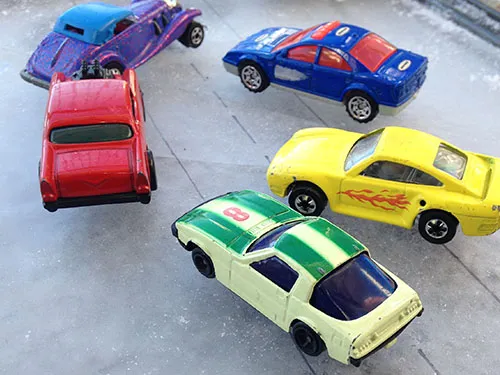Explore How Cars Lose Control on Ice, Safely
Icy roads make winter driving dangerous. Ice is slippery, causing cars and trucks to skid out of control. You can safely explore how cars slip on ice by making a model of an icy road and testing out how well toy cars drive on the ice.
What you’ll need
- Water
- A shallow pan (like a cookie sheet)
- A few toy cars
- A permanent marker
Directions
Build a model icy hill.
- Fill the pan with water and place it in a freezer for several hours or overnight (or if the temperature is below freezing place it outside).
- When the water has frozen, set it on a table top or floor, and prop up the pan to create a slight incline.
- Use the marker to draw a road on the ice, from top to bottom (like in the picture below).

Once you have a pan of ice with a road drawn on the surface, you're ready to test out whether your toy cars and trucks are likely to slip.
UCAR
Make your own experiment.
- Decide what you want to test! What makes a toy car more likely to slip (or less likely)? Here are some ideas for slippery experiments:
- Perhaps you want to figure out if some toy cars slip more than others.
- Perhaps you want to compare the types of tires or the size of the vehicles.
- Or you can leave the ice out of the freezer for a few minutes until a thin layer of water forms on top and see if your toy cars are more likely to slip (as Sheldon Drobot explains in this video).
- Once you know what you’d like to try, write your hypothesis – a sentence that states what you think will happen.
Test your hypothesis.
- Now that you have your hypothesis, it’s time to test it out. Send the cars down the slope and see what happens!
- Remember to repeat your experiment a number of times to see if you get the same result each time.

These cars slid all over the ice.
UCAR